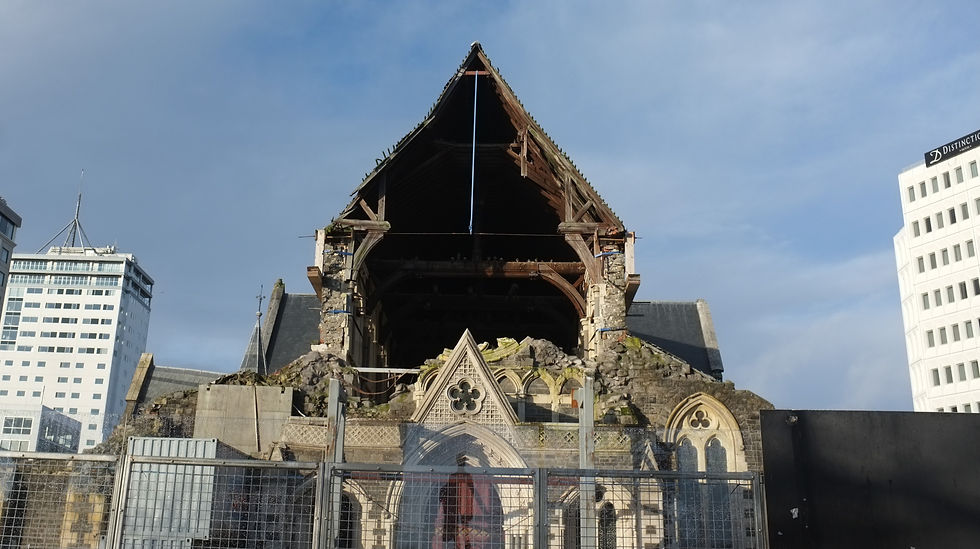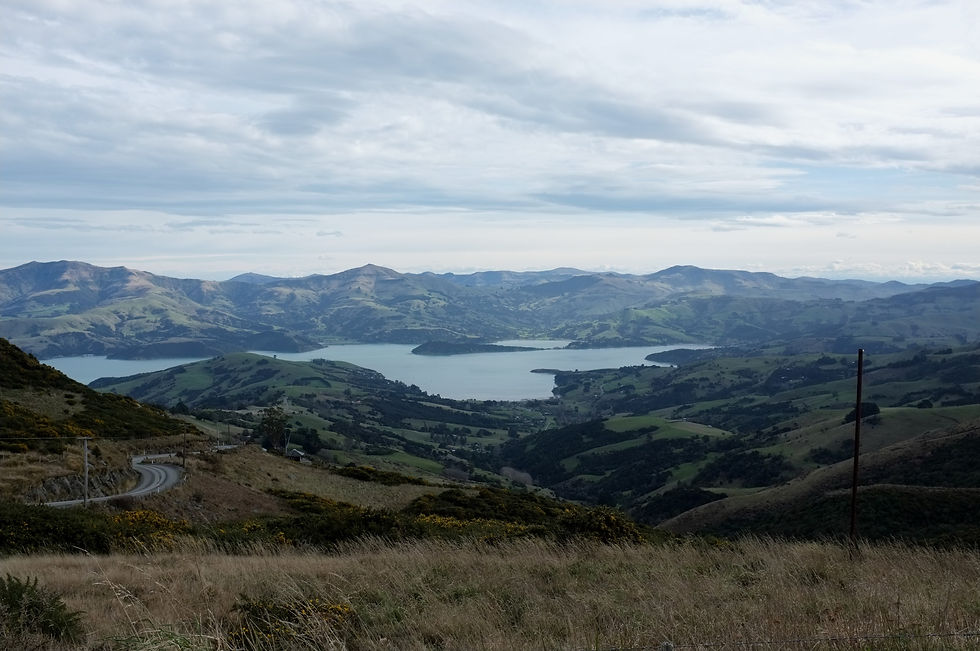18. Trachyte
- Janeen Page
- Jul 31, 2020
- 2 min read
Updated: Oct 1, 2020
Based on 'Rock glazes of NZ' Minna Bondy
Sample 68. Trachyte
From large volcanic dyke on Lyttleton Sumner road near Christchurch
I finally crawled out from under bridges and into Christchurch. Life is full of magical moments and one of them occurred as I was debating whether I could walk past the open fleshy wound that is the Christchurch Cathedral for the second time.

Seeing it for the first time churned my stomach, it was visceral and I had to look away. Before I had made my decision the first familiar face I had seen in three weeks appeared, Adam McGrath whose music often fills my studio. What a pleasure it was to hear Adams perspective of the new and healing city and walk with someone who has lived through the change. Adam was integral to the healing of the city through his music which is well documented down the youtube rabbit hole https://www.youtube.com/watch?v=7arcykfdMZk His soothing voice is a balm for the soul, what a privilege to have him there as I walked the streets of Christchurch.

Adam also provided a bit of local knowledge, sending me around the Summit road to Akaroa with the words "have you got a 4WD? oh, you'll make it" This incredible top road around what is left of the Lyttleton and Akaroa volcanos is also an open fleshy wound into the past volcanic history in the area. Huge Basalt crags and sugar loaves rise up as you look down into the most picturesque bays and inlets. It really does give you a real experience of the volcanic past.

I was heading to the Ōnawe peninsular the most obvious and spectacular outcrop of Trachyte on the peninsula. This was another place I didn't feel comfortable taking a sample as Ōnawe is a historic Pa site. Once I knew what to look for though it was obvious in many other cuttings along the roadside of the peninsula.

Trachyte is natures agateware and geologists describe it as having a ceramic-like appearance. Forced up by volcanic activity its the volcanic version of syenite, having cooled above the surface as opposed to below. It has less silica than basalt and therefore when molten moves slower forming incredible patterns within the basalt for us to view 13 million years on.

Those of you that are potters will be familiar with the glaze ingredients such as feldspar, silica and Nepheline syenite, it's just amazing to see these materials in nature and behaving in similar ways. I'm not going to pretend I understand the geology but https://flexiblelearning.auckland.ac.nz/rocks_minerals/rocks/trachyte.html is a great site for further information.
18A 18A 18B
















Commentaires